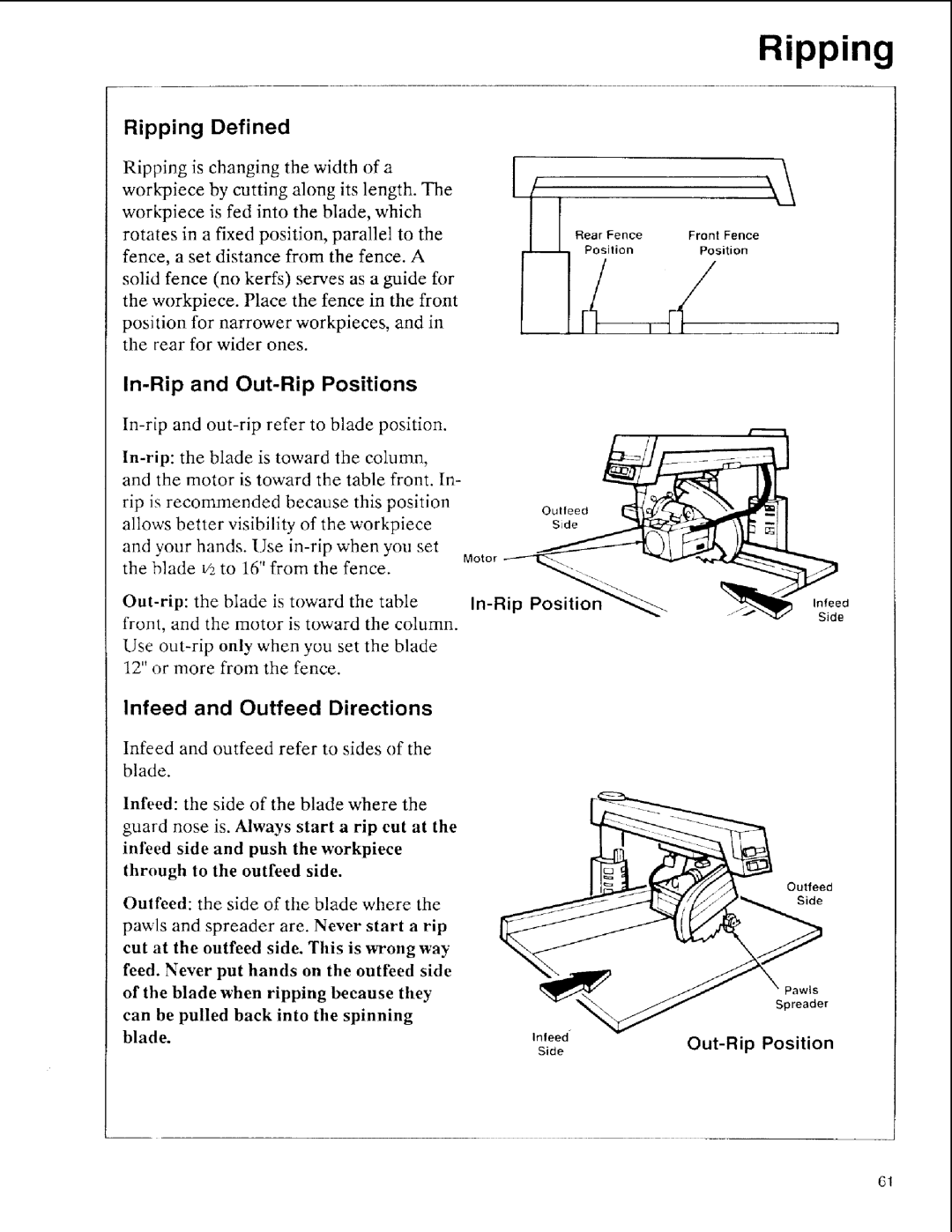
Ripping Defined
Ripping is changing the width of a workpiece by cutting along its length. The workpiece is fed into the blade, which rotates in a fixed position, parallel to the fence, a set distance from the fence. A solid fence (no kerfs) serves as a guide for the workpiece. Place the fence in the front position for narrower workpieces, and in the rear for wider ones.
Rear Fence
Position
Ripping
Front Fence
Position
In-Rip and Out-Rip Positions
and the motor is toward the table front. In-
rip is recommended because this position
allows better visibility of the workpiece
and your hands. Use
front, and the motor is toward the column.
Use
Motor
Infeed and Outfeed Directions
Infeed and outfeed refer to sides of the blade.
Infeed: | the | side | of the | blade | where | the | |
guard | nose | is. Always | start | a | rip cut | at the | |
infeed | side | and | push | the | workpiece |
| |
through to the outfeed side.
Outfeed: the side of tim blade where the
pawls and spreader are. Never start a rip
cut at the outfeed side. This is wrong way
feed. Never put hands on the outfeed side
of the blade when ripping because | they |
can be pulled back into the spinning |
|
blade. | Inleed _ |
| Side |
Outfeed
Side
Pawls
Spreader
61
